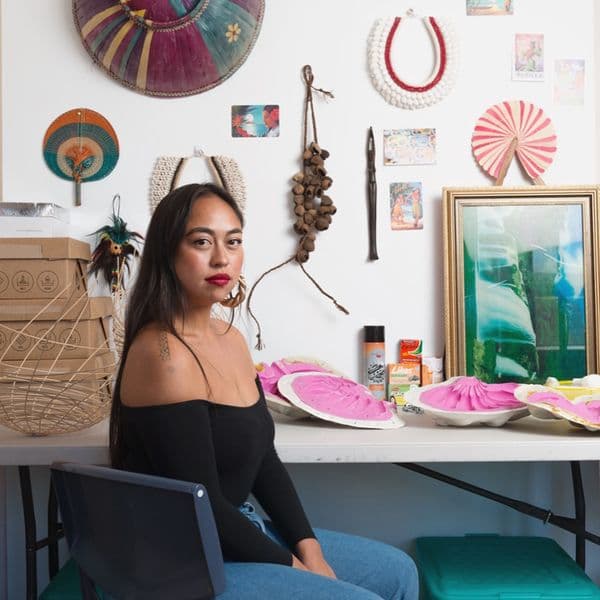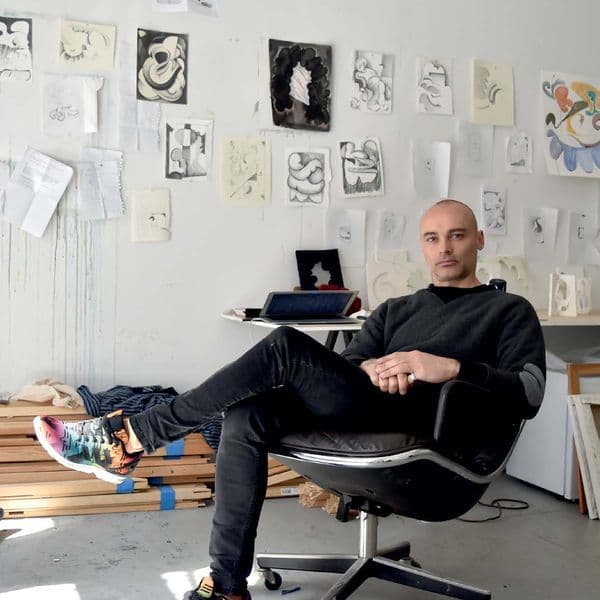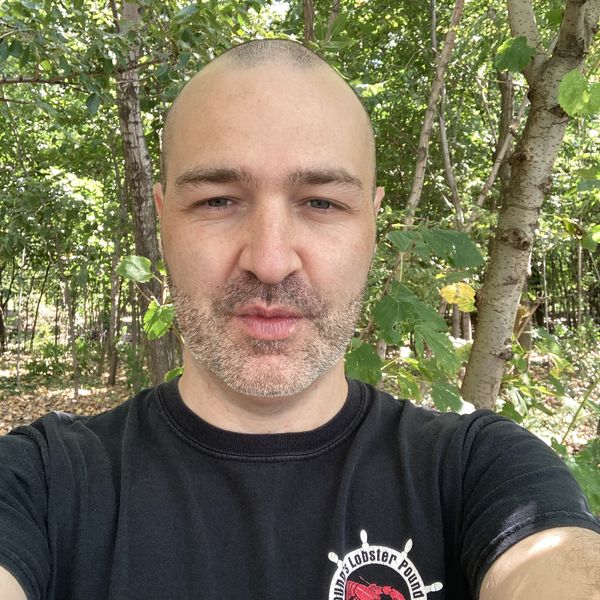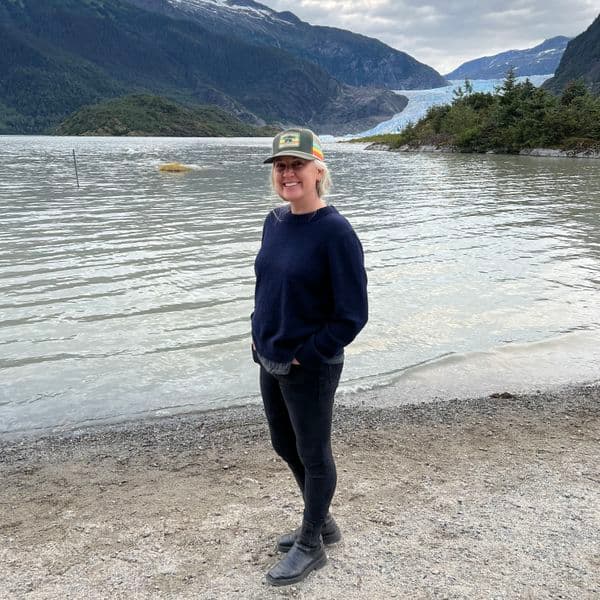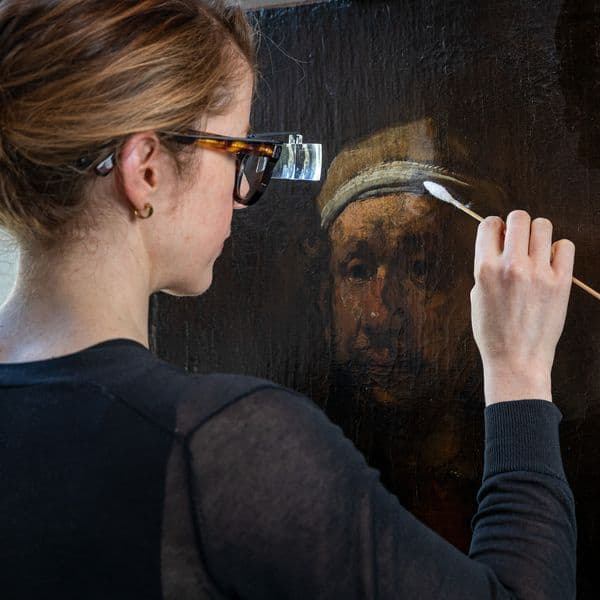Nicholas Croggon
2017 AUSART Fellow/Scholar
///national-gallery-of-australia/media/dd/images/Nicholas_Crogan.JPG)
Portrait of Nicholas Croggon
Art historian and critic Nicholas Croggon is currently completing his PhD in art history at Columbia University in New York. Graduating with first-class honours in art history and law from the University of Melbourne, he worked as a lawyer for four years before embarking on his PhD. Croggon is the co-founder and co-editor of Discipline, an Australian contemporary art journal, and is also the editor of emaj, an online art history journal.
What area of art history do you work in?
I study the history of art in 20th-century North America, and in particular its engagement with image technologies like film, photography and video.
What is your PhD thesis about?
I’m focusing on the late 1960s and early 1970s, when video technology first became available to consumers in the United States. This was a revolutionary time in US history, and video was received by many artists, architects and activists as a technology with utopian potential. My thesis is about several projects – from video artworks and installations, to video collectives and communes – that sought to realise this potential.
If you had to nominate one or two works of avant-garde video art from the period that rock your boat, what would they be?
This is a deeply difficult question! I would say, first, not a video, but a book about video – Michael Shamberg's Guerrilla Television. Secondly, I would nominate the under-appreciated works of Woody and Steina Vasulka from the early 1970s.
Finally, Ant Farm and TR Uthco's performance and video work, The Eternal Frame.
You have a background in law, including environmental law. You've also co-founded a contemporary art journal, which you continue to co-edit, and you edit an online art history journal. Busy man! How has your life experience enhanced your passion for art history?
These different experiences have exposed me to very different ways of seeing the world, and how these ways of seeing can result in big social and political change. Art and visual culture is a place where dominant ways of seeing the world play out, but also where alternative modes can be explored and played out. It's important and exciting to explore the history of these different ways of seeing. It's a reminder of the contingency of things – that at any moment, things could turn out differently.
Tell us about your Columbia University experience.
I relocated to New York in 2013 and completed three years of coursework at Columbia, which was followed by comprehensive exams. After passing these, I began my thesis, supervised by Branden Joseph. Thanks to the AusArt Fellowship, I was able to complete my research traveling around the US and to Europe. Having done this, I moved back to Australia in 2019 and have been based in Sydney since then, finishing the writing of my thesis.
What has been the most inspiring part of undertaking a PhD at Columbia?
Working with an amazing group of other art history students, as well as students in other disciplines. Prestigious and wealthy universities such as Columbia also attract many fascinating voices for public lectures, seminars and other activities. It is invigorating to feel like you are at the center of a live and high-stakes conversation about the history of art.
How has the AusArt Fellowship supported your study and research endeavours?
The AusArt Fellowship provided funding for a crucial year of PhD study, allowing me to conduct archival research across the United States (in New York, San Francisco, and Los Angeles), as well as in Germany, London and Iceland. This research sits at the heart of my PhD thesis, and will form the core of my research practice and career going forward.
'The AusArt Fellowship provided funding for a crucial year of PhD study, allowing me to conduct archival research across the United States (in New York, San Francisco, and Los Angeles), as well as in Germany, London and Iceland. This research sits at the heart of my PhD thesis, and will form the core of my research practice and career going forward.'
What did you experience or have access to while studying in the US that you couldn’t have experienced or accessed in Australia?
Studying in the US gave me direct access to many of the archives that are central to the history of video art, materials completely inaccessible in Australia. Moreover, my position at Columbia plugged me in to networks that made other important materials accessible.
Has studying in the US helped expand your professional network?
It certainly has! In Sydney, I am currently working part-time as the Events and Programs Officer at the Power Institute, at the University of Sydney. The Power Institute is perhaps Australia's most important foundation dedicated to publishing and presenting art history to the Australian public. My role involves organising research programs, lectures and seminars, and I have drawn extensively on the relationships and contacts made while in the US. My experience of studying in the US has also enhanced my understanding of what constitutes the most pressing issues of global concern in art history.

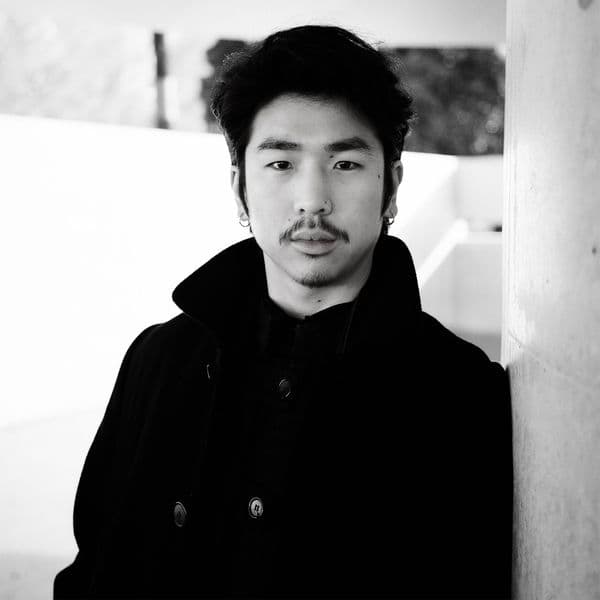
///national-gallery-of-australia/media/dd/images/Ihab_S_Balla.jpg)
///national-gallery-of-australia/media/dd/images/Pip_Mott_by_Jesse_Hunniford.jpg)
///national-gallery-of-australia/media/dd/images/Guy_Grabowsky_Portrait_by_Hugh_Davies.jpg)
///national-gallery-of-australia/media/dd/images/Kai_Waskikowski_by_Joe_Brennan.jpg)
///national-gallery-of-australia/media/dd/images/Nicholas_Smith_photo_by_Vivian_Nilan_tsKjo2j.jpg)
